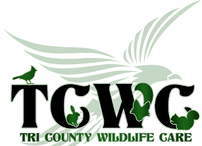September 2015 - The Rufous Hummingbird
|
One of the longest migrants, according to size, the Rufous Hummingbird travels from Alaska to Mexico for approximately 3,900 miles and they are only 3 inches long!
Their migration takes them up the Pacific Coast in late winter and early spring, so we will see them here in Amador and Calaveras Counties starting in February and perhaps through May. They are heading for southeastern Alaska to breed, farther north than any other hummingbird in the world. Then in August and September we see them again as they head back south for the winter warmth of Mexico. Rufous Hummingbirds consume five times their body weight each day. Flowering plants quench their mighty thirst, but they also eat small insects, and sap. Hummingbirds will eat gnats, midges, and flies taken from the air, and will eat aphids on your plants. If you want to put up a feeder for these and other hummers, select a feeder that is easy to clean. Fill with one part sugar (no honey!) to four parts hot water. Stir to dissolve. Red food coloring is not recommended and not needed. Clean that feeder regularly and put in fresh sugar water. And you can keep that feeder up all year for the Anna’s Hummingbirds that do not migrate. The brilliant throat feathers are called a “gorget”. This odd word comes from a knight-in-armor’s metallic collar, or gorget, that protected his throat. The glint is the result of iridescence rather than colored pigments. In just the right light, this is one of the most beautiful sights in the bird kingdom. To attract hummingbirds to your garden plant trumpet honeysuckle, blue or hot lips salvia (sage) or bee balm. These are a few of the many flowering plants that will attract these little treasures. In addition to your hummingbird feeder, also provide water with a bird bath or small pond. Get up early in the morning to see many hummingbirds bathing in your bird bath, about the only time of day they are not chasing each other. |
Learn More!
|

